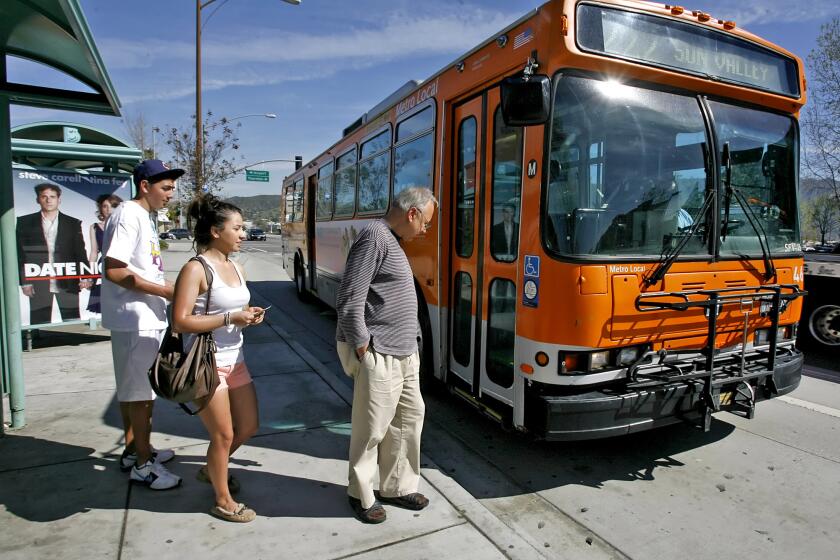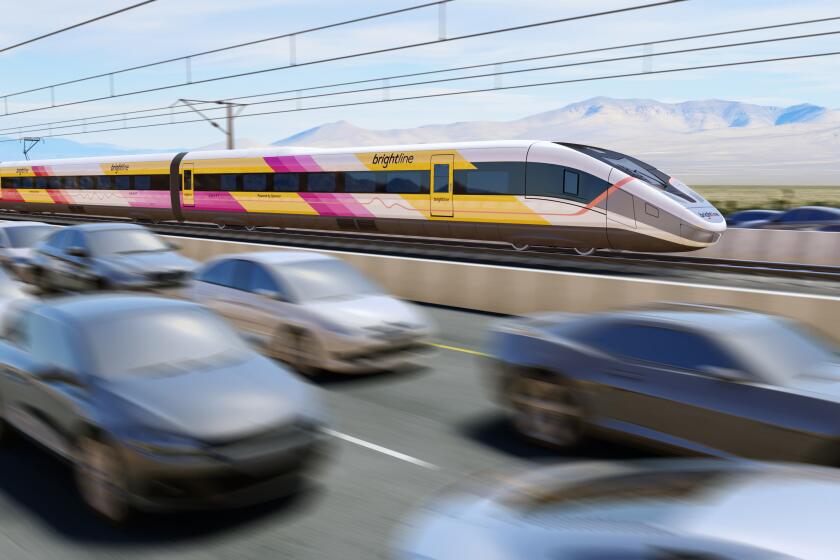L.A. Helps Pave Way for Speed Humps : Roads: Council OKs a plan to let neighborhoods request the asphalt hillocks to slow traffic.
Don’t call them bumps. They are humps. And they may be coming soon to a street near you, Los Angeles.
The City Council on Tuesday moved ahead with a plan that would allow the installation of asphalt humps to prevent speeding on residential streets.
These humps would be slow risers--peaking at just three inches above road level and stretching for 12 feet. That’s supposed to be mild enough to spare automotive transmissions, but jarring enough to slow drivers by 10 miles per hour or more, city transportation officials said.
The humps should not be confused with bumps, their parking-lot cousins that are up to eight inches high and deliver a much sharper jolt, the engineers say.
Whatever the name, the city’s lawmakers voted unanimously to draw up plans that would allow neighborhood groups to request installation of asphalt hillocks on their streets. A standard three-hump set--typically spaced 250 feet apart and striped with white paint--will cost about $6,000.
Residents in speed hump zones would pay for the installation. The council asked officials to search for public funds to help poor communities foot the bill.
Demand for speed humps is intense. About 200 informal requests have already been made.
“I get more calls about this than I do about crime,” said Councilman Zev Yaroslavsky.
If the plan gets final council approval in about two weeks, neighborhood groups will be allowed to petition to have humps installed.
Signatures would have to be obtained from 75% of the residents on a block to initiate a request.
Transportation officials will decide which projects to tackle first, and will give priority to requests for humps on the most dangerous streets and to the earliest applications.
For two years, Los Angeles has had 15 test sites. An analysis of the pilot program showed that on residential streets best suited for the humps--speeds dropped by 10 to 17 m.p.h. That brought speeds down to a permissible 25 to 30 m.p.h., said Tom Swire, a senior city transportation engineer.
But the city attorney’s office is concerned about the legal liability the humps might create if they cause accidents, particularly because the California Department of Transportation does not specifically authorize them as “traffic control devices.”
That has led to some semantic and legal maneuvering. The city is trying to have the humps declared “roadway design features,” akin to traffic islands or median barriers. Assemblyman Richard Katz (D-Sylmar) has attached a provision to an omnibus transportation bill that would make the change.
Cities that have gone ahead with speed humps without the state’s imprimatur have apparently not suffered as a result, but Los Angeles and other jurisdictions have proceeded more cautiously, said Assistant City Atty. Shelley Smith. “We would feel more comfortable if the legal authority to install the hump had been established,” Smith said. “It enhances the city’s position if there is litigation.”
Transit engineers said that, regardless of legal underpinnings, the devices are safe. Police cars zipped over humps in tests at 50 m.p.h., according to a report, “with no loss of control, or discomfort.” Heavy firetrucks had to slow considerably more, but would not be delayed much unless they hit an unusually large concentration of humps in one neighborhood.
And residents are clamoring for anything that will slow down speeders, said Councilwoman Jackie Goldberg. “People feel very strongly that pets and children and even seniors are having a hard time crossing (the street) with these high speeds.”
The humps will come with signs. But, bureaucratic terminology aside, the signs will call them bumps.
“We tend to call them bumps on the signs and not humps,” Swire said. “Otherwise they tend to end up on fraternity house walls.”
More to Read
Start your day right
Sign up for Essential California for news, features and recommendations from the L.A. Times and beyond in your inbox six days a week.
You may occasionally receive promotional content from the Los Angeles Times.







